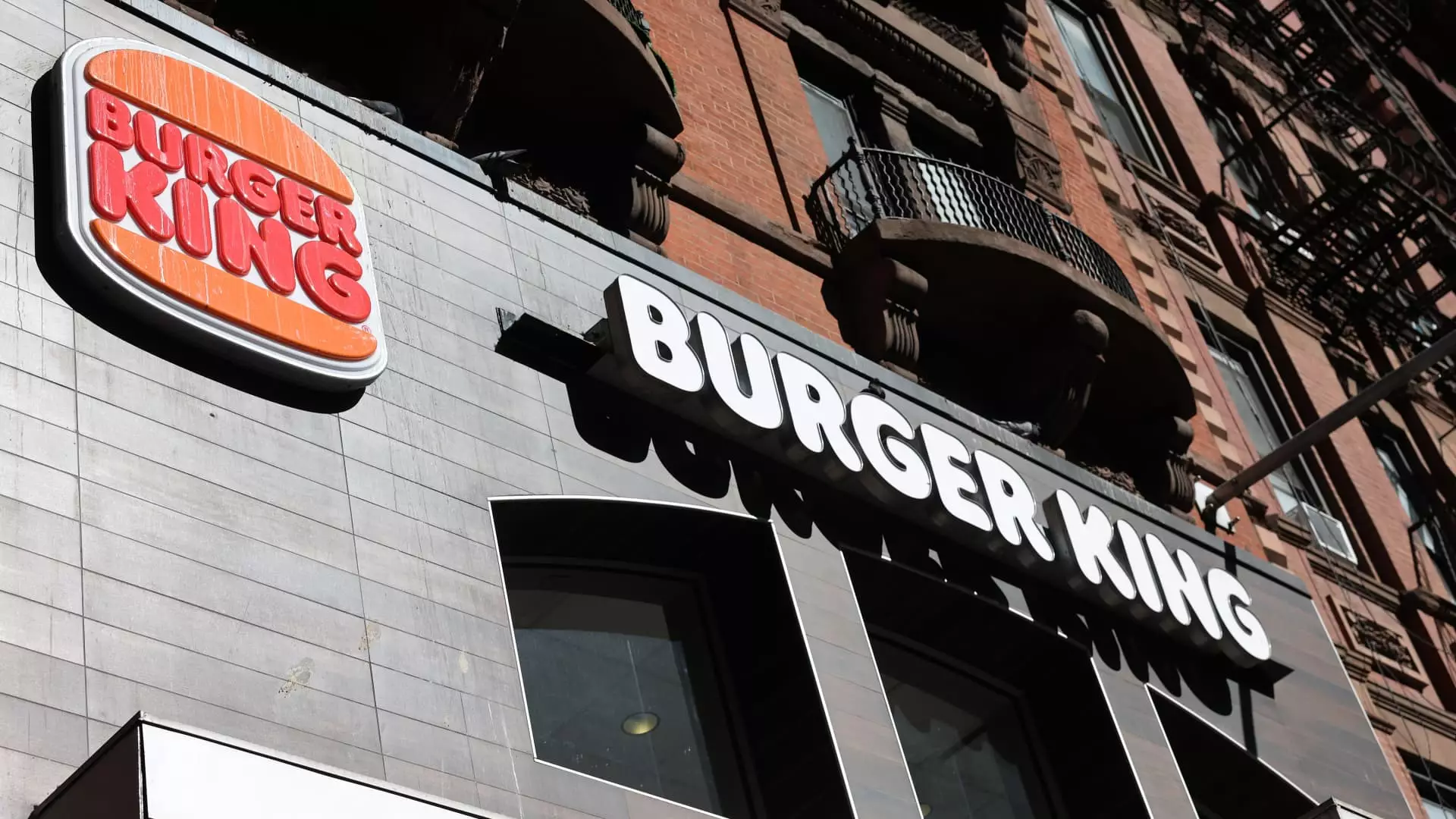Restaurant Brands International recently unveiled its quarterly earnings, and the results were nothing short of disheartening. The company reported earnings per share of 75 cents, which, while positive in isolation, fell short of analysts’ expectations of 78 cents. The revenue figures echoed this sentiment, coming in at $2.11 billion, which disappointed expectations set at $2.13 billion. Such discrepancies suggest not just a momentary lapse but a potential widening gulf between what Restaurant Brands is offering and what investors are demanding. A 2% decline in stock price during premarket trading serves as a clear signal that the market reacted negatively, indicating a loss of confidence in the company’s ability to turn around its biggest assets: Burger King, Popeyes, and Tim Hortons.
Same-Store Sales: A Red Flag
The most alarming takeaway from the report is the decline in same-store sales for Restaurant Brands’ flagship brands. Despite an overall slight increase of 0.1% in same-store sales, delving deeper reveals troubling trends: Tim Hortons, which comprises more than 40% of the company’s revenue, reported a decline of 0.1%—far under the forecasted growth of 1.4%. Similarly, Burger King experienced a 1.3% drop, more significant than the anticipated 0.9% decrease. But it was Popeyes that truly shocked observers, with a staggering 4% dip, which represents not just a miss against projections but a concerning shift in consumer preferences.
Consumer Caution and External Factors
This troubling performance cannot be chalked up solely to internal factors; external influences are undeniably at play. A cautious consumer, coupled with unpredictable weather events, has led to an overall decline in fast-food demand. Amid a landscape where diners are choosing healthier options or dining out less frequently, the battle for market share among quick-service restaurants grows fiercer. Yet, the apparent inability of these fast-food giants to adapt to shifting consumer preferences raises questions about their strategic direction. Are they equipped to evolve with a customer base that increasingly prioritizes health and sustainability over convenience and indulgence?
What Lies Ahead for Restaurant Brands?
With a growing trend towards healthier and more sustainable eating habits, the future appears precarious for Restaurant Brands. The recent financials highlight a concerning stagnation linked to a broader malaise within the fast-food sector, which is lagging behind in innovation and customer engagement. If these primary brands cannot pivot quickly to re-capture consumer interest, investors may find themselves looking at a long-term downward trajectory. For a company that boasts such high-profile chains, it is unsettling to witness such a rapid decline in sales, especially when the competition is not sleeping. In an increasingly crowded food service market, the excuses for underperformance are starting to wear thin.

